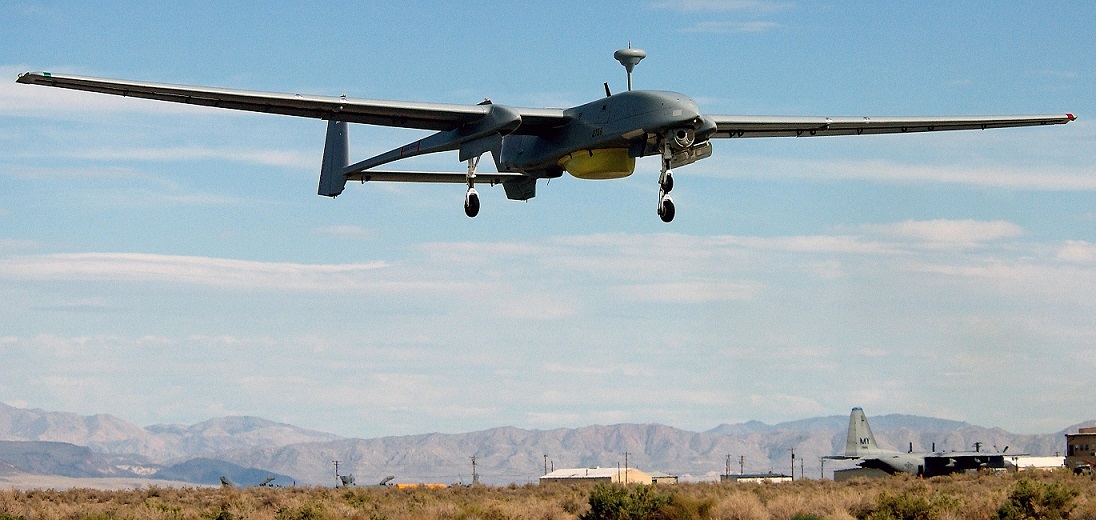This post is also available in:
 עברית (Hebrew)
עברית (Hebrew)
A new command and control (C2) system which integrates video feeds from the Heron 1 Unmanned Aerial Vehicle (UAV) into an augmented reality display has been developed by Singapore’s Defence Science and Technology Agency (DSTA). The UAV is manufactured by the Israel Aerospace Industries (IAI).
The C2 system, acting as the nerve center of the Command Post, gives commanders an integrated battlefield picture, and enables the Singapore Armed Forces (SAF) to shorten the overall sensor-to-shooter cycle. Using advanced graphics rendering technology, static geographical data such as landmarks, road names, building types, vegetation) are overlaid on top of the real-time video captured by the UAV.
The MoD said that previously, the information and operations were largely conducted using disparate sources. Videos captured by the UAV had to be manually correlated and marked out on a separate static map display. The integrated display reduced the cognitive load of operators, and allowed them to quickly orientate to the latest ground situation picture to make timely decisions.
According to defenseworld.net, video analytics technology is also applied to the UAV live feeds to automatically derive target locations onto the integrated display, further shortening the overall decision-making process and enabling operators to better keep track of multiple targets.
The new tools for the C2 system to enhance decision-making were tested at the Exercise Forging Sabre (XFS) 2017. Sense-making tools were introduced to help commanders in making mission-critical decisions. For example, a special dashboard was created to aggregate higher-level information, such as the number of available or functional assets and bases. Commanders can make more accurate and rapid assessment of the extent of battle damage with the addition of new video analytics technology.
The C2 system was designed such that components supporting various exercise entities are reconfigurable. For example, simulation components that allow exercise personnel to validate their operational processes can be integrated to enable the SAF to undergo more complex exercise scenarios.
The set-up time for the C2 system was also reduced from weeks to just days with server virtualization technology that replaces bulky physical servers with virtual ones that allow space and computing optimization.


























